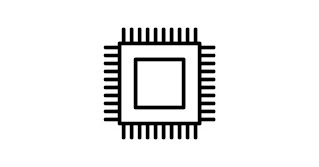1. Example of an external interrupt is
a. divide by zero interrupt
b. keyboard interrupt
c. overflow interrupt
d. type2 interrupt
Ans- b. keyboard interrupt
2. If the interrupt is generated by the execution of an interrupt instruction then it is
a. internal interrupt
b. external interrupt
c. interrupt-in-interrupt
d. none of the mentioned
Ans- a. internal interrupt
3. If an interrupt is generated from outside the processor then it is an
a. internal interrupt
b. external interrupt
c. interrupt
d. none of the mentioned
Ans- b. external interrupt
4. To estimate the size of an executable program before it is assembled and linked, the programming methodology concerned is by writing
a. programs with more than one segment for data and code
b. programs with FAR subroutines each of size up to 64KB
c. programs with more than one segment for stack
d. all of the mentioned
Ans- d. all of the mentioned
5. The technique to estimate the size of an executable program, before it is assembled and linked is
a. memory location technique
b. global variable technique
c. stack
d. none
Ans- d. none
6. For passing the parameters to procedures using the PUBLIC & EXTRN directives, it must be declared PUBLIC in the
a. subroutine
b. procedure
c. main routine
d. main routine and subroutine
Ans- c. main routine
7. If a procedure is interactive, then
a. it accepts inputs directly from input devices
b. it uses global declared variable technique
c. it uses stack
d. it uses memory locations
Ans- a. it accepts inputs directly from input devices
8. The technique that is used to pass the data or parameter to procedures in assembly language program is by using
a. global declared variable
b. registers
c. stack
d. all of the mentioned
Ans- d. all of the mentioned
9. Procedures, for their execution, require
a. input data
b. output data
c. constants
d. input data or constants
Ans- d. input data or constants
10. Procedures are also known as
a. macros
b. segment
c. subroutines
d. none
Ans- c. subroutines

